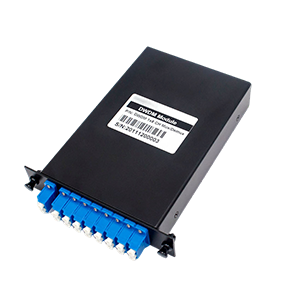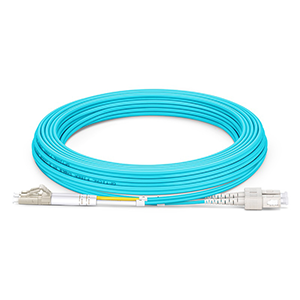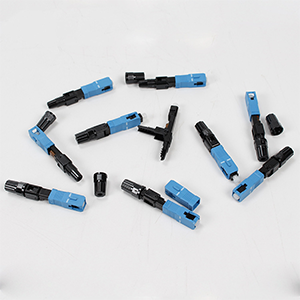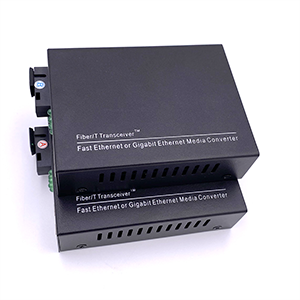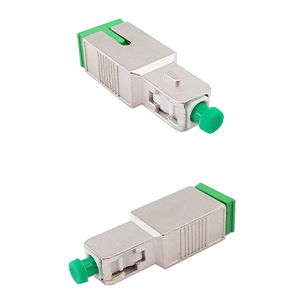I will delve into the differences between CWDM and DWDM, including working principles, application scenarios and advantages. Whether you are looking for short-distance communication solutions or pursuing high-capacity data transmission, this article will reveal the unique charms of CWDM and DWDM to help you make a wise choice.
CWDM and DWDM are both multi-wavelength transmission technologies commonly used in the field of optical fiber communications, used to transmit multiple independent optical signals simultaneously in optical fibers. They have some significant differences in how they work, application scenarios, and advantages.
The difference between CWDM and DWDM is critical to understanding and selecting an optical fiber transmission solution that suits specific needs. By comparing and analyzing these technologies, we can better understand their characteristics and applicability to make informed decisions in practical applications.
The working principle and characteristics of CWDM
CWDM (Coarse Wavelength Division Multiplexing) is a multi-wavelength transmission technology that achieves multiplexing by transmitting signals with a wide wavelength range in optical fibers. The basic principle is to use optical signals of different wavelengths to transmit in optical fibers and separate them at the receiving end to achieve simultaneous transmission of multiple independent signals.
The characteristics of CWDM mainly include the following aspects:
-
Large wavelength spacing: Compared with DWDM, CWDM has a larger wavelength spacing. Typically, CWDM has a wavelength spacing of 20 nanometers (nm), while DWDM typically has a wavelength spacing of 0.8 nm or less. Larger wavelength spacing means that CWDM can accommodate fewer wavelengths, thus limiting the number of transmitted channels.
-
The number of channels is relatively small: Due to the large wavelength interval, the number of CWDM channels is relatively small. Generally, a CWDM system can support 4 to 18 wavelength channels, each channel corresponding to a specific wavelength. In contrast, DWDM systems can support many more channels, often reaching dozens or even hundreds of channels.
-
Suitable for short-distance and low-capacity requirements: Due to the large wavelength spacing and small number of channels, CWDM is mainly suitable for short-distance communication and low-capacity requirements. It is commonly used for applications such as local area network (LAN) connections, campus networks, small business networks, and connections within data centers, where the communication distance is generally within tens of kilometers.
CWDM has some advantages in short-distance communications and low capacity requirements, including:
-
Low cost: Compared with DWDM, the cost of equipment and components of the CWDM system is lower. Due to the large wavelength separation, optical device design and manufacturing are simpler, which reduces the cost of the system.
-
Simplified deployment: The deployment of CWDM systems is relatively simple and does not require too much precise wavelength management. The smaller number of channels also reduces system complexity, making installation and maintenance easier.
-
Compatibility: The CWDM system can be compatible with existing single-wavelength optical fiber communication systems without replacing all equipment. This makes the upgrade process of deploying CWDM technology relatively easy.
In short, CWDM is suitable for scenarios with short-distance communications and low capacity requirements. Its characteristics include large wavelength intervals and a relatively small number of channels. By choosing CWDM technology, users can reduce costs and simplify the deployment process while meeting their needs.
The working principle and characteristics of DWDM
DWDM (Dense Wavelength Division Multiplexing) is a multi-wavelength transmission technology that achieves high-capacity data transmission by transmitting densely arranged narrow-wavelength signals in optical fibers. The basic principle is to use different wavelengths of light to simultaneously transmit multiple signals into the optical fiber and analyze them at the receiving end.
The characteristics of DWDM mainly include the following aspects:
-
Smaller wavelength spacing: Compared with CWDM, DWDM has a smaller wavelength spacing. Typically, DWDM has a wavelength spacing of 0.8 nanometers (nm) or less. Smaller wavelength spacing means that DWDM can accommodate more wavelengths, thereby enabling more channel transmissions.
-
The number of channels is relatively large: Due to the small wavelength interval, the number of DWDM channels is relatively large. Generally, a DWDM system can support dozens or even hundreds of wavelength channels, each channel corresponding to a specific wavelength. In comparison, the number of channels in a CWDM system is smaller.
-
Suitable for long-distance and high-capacity requirements: Due to the small wavelength interval and large number of channels, DWDM is mainly suitable for long-distance communication and high-capacity requirements. It is often used in applications with high bandwidth requirements such as optical transmission backbone networks, cross-border transmission, wide area network (WAN) connections, and large data centers, where the communication distance can cover hundreds to thousands of kilometers.
DWDM has some advantages in long-distance communication and high-capacity requirements, including:
-
High-capacity transmission: Due to the large number of channels, the DWDM system can achieve high-capacity data transmission. By transmitting multiple signals simultaneously, DWDM technology effectively utilizes the bandwidth of optical fiber and provides the ability to transmit large-scale data.
-
Long-distance transmission: The DWDM system can transmit optical signals over long distances and is suitable for communication needs across cities, countries and even intercontinents. This makes DWDM an important technology for building global communication networks.
-
High flexibility and scalability: Due to the large number of channels, the DWDM system has high flexibility and scalability. Users can add or remove channels according to needs and flexibly adjust system capacity to adapt to growing data transmission needs.
In short, DWDM is suitable for scenarios with long-distance communication and high-capacity requirements. Its characteristics include smaller wavelength intervals and a relatively large number of channels. By choosing DWDM technology, users can achieve high-capacity data transmission and meet communication needs across long distances.
Comparison between CWDM and DWDM
CWDM (Coarse Wavelength Division Multiplexing) and DWDM (Dense Wavelength Division Multiplexing) are multi-wavelength transmission technologies used for optical fiber communications. They have obvious differences in wavelength spacing, number of channels, transmission distance and capacity.
Wavelength spacing and number of channels:
- CWDM has a larger wavelength interval, usually 20 nm. It supports a smaller number of channels, generally 4 to 18 wavelength channels.
- DWDM has a small wavelength spacing, usually 0.8 nm or less. It supports a large number of channels, up to dozens or even hundreds of wavelength channels.
Transmission distance and capacity:
- CWDM is suitable for short-distance communications, usually within a range of tens of kilometers. It is mainly used in low-capacity demand scenarios such as local area network (LAN) connections, campus networks, small business networks, and connections within data centers.
- DWDM is suitable for long-distance communications and can cover distances of hundreds to thousands of kilometers. It is suitable for high-capacity demand scenarios such as optical transmission backbone networks, cross-border transmission, wide area network (WAN) connections, and large data centers.
Capacity and Flexibility:
- CWDM has a small number of channels, so its capacity is relatively low. It is suitable for scenarios with low bandwidth requirements.
- DWDM has a larger number of channels, so its capacity is higher. It can achieve high-capacity data transmission and has high flexibility and scalability.
Choosing CWDM or DWDM depends on specific needs and application scenarios. Here are some guidelines:
-
If you need to transmit low-capacity data over short distances and have a limited budget, you can choose CWDM technology. It provides lower cost and simplified deployment process.
-
If you need to transmit high-capacity data over long distances and require flexibility and scalability, you should choose DWDM technology. It can meet high bandwidth requirements and support large-scale data transfer.
-
If you need to transmit medium-capacity data over a medium-distance range, you can comprehensively consider the advantages of CWDM and DWDM based on the specific situation and choose the most suitable technology.
To sum up, there are differences between CWDM and DWDM in terms of wavelength spacing, number of channels, transmission distance and capacity. Choosing the appropriate technology depends on specific needs and application scenarios.
Advantages and limitations of CWDM and DWDM
Advantages of CWDM:
-
Cost-effectiveness: Compared with DWDM, CWDM has lower equipment and component costs, making it a low-cost multi-wavelength transmission solution. This makes CWDM suitable for budget-constrained application scenarios.
-
Flexibility: CWDM has a larger wavelength interval and a smaller number of channels, which makes the CWDM system more flexible. Users can easily add or remove channels as needed to adapt to changes in the network.
-
Compatibility: CWDM has good compatibility with optical fiber transmission infrastructure. It can coexist with existing single-wavelength fiber optic systems without requiring extensive modifications to existing infrastructure.
Advantages of DWDM:
-
High-capacity transmission: DWDM supports smaller wavelength intervals and a larger number of channels, so higher data transmission capacity can be achieved. It is ideal for large-scale data transfer needs.
-
Long distance transmission: DWDM system has long transmission distance capability and can cover distances of hundreds to thousands of kilometers. This makes DWDM the technology of choice for long-distance communications across cities, countries, and even continents.
-
Wavelength management: DWDM systems have stronger wavelength management capabilities. Due to the smaller wavelength spacing, DWDM can more precisely control and manage signals of different wavelengths, improving the flexibility and reliability of the network.
Limitations of CWDM:
-
Transmission distance limitation: Due to the larger wavelength spacing and smaller number of channels, CWDM is suitable for shorter-distance communications, generally within a range of dozens of kilometers. For long-distance transmission requirements, the performance of CWDM may be limited.
-
Capacity limitation: Compared with DWDM, CWDM has lower capacity. It is suitable for scenarios with low bandwidth requirements, but is limited in high-capacity data transmission.
Limitations of DWDM:
-
High cost: Compared with CWDM, DWDM equipment and component costs are higher. DWDM is more expensive to deploy and maintain due to the need for smaller wavelength intervals and more refined wavelength management.
-
Wavelength management challenges: Due to the large number of channels, wavelength management of DWDM systems may become complex. The wavelength of each channel needs to be precisely controlled and managed to ensure minimal interference between signals.
-
Compatibility limitations: DWDM systems may require a certain degree of modification and upgrade of existing fiber optic infrastructure to ensure compatibility with existing systems.
To sum up, both CWDM and DWDM have their own advantages and limitations. The selection of appropriate technology should be comprehensively considered based on specific requirements and application scenarios.
Application cases of CWDM and DWDM
Both CWDM and DWDM play an important role in various practical applications. Here are examples of their application in different scenarios:
Data Center Interconnect:
- CWDM application cases: In data center interconnection, CWDM can be used to connect short-distance communications between different data centers. It can provide low-cost multi-wavelength transmission solutions for connecting facilities such as storage, computing and cloud services between data centers.
- DWDM application cases: For data center interconnections that require high capacity and long distances, DWDM is the more common choice. It enables high-capacity communications between large-scale data centers and supports data transmission across longer distances.
WAN extension:
- CWDM application cases: In wide area network expansion, CWDM can be used to connect communications between different office locations or branches. It is suitable for WAN connections that require short distances and low bandwidth, such as branch interconnections within an enterprise.
- DWDM application cases: For the high capacity requirements of wide area network expansion, DWDM is a more suitable choice. It can extend the transmission distance of WAN and provide high-capacity data transmission, and is suitable for WAN communications connecting different cities, regions or countries.
Intercontinental communication:
- DWDM application cases: Intercontinental communications usually require long distance, highCapacity transmission capability. DWDM is an essential technology in this case. It can realize optical fiber transmission across oceans and meet international high-capacity data communication needs.
Emphasis on the importance of selecting the right technology based on needs to achieve optimal performance and cost-effectiveness. When deciding whether to use CWDM or DWDM, the following factors should be considered:
-
Transmission distance: If the communication distance is relatively short and the bandwidth requirements are not high, CWDM is an economical choice. For longer transmission distances or scenarios requiring high capacity, DWDM technology should be selected.
-
Bandwidth requirements: If high-capacity data transmission is required, especially in scenarios such as data center interconnection or cross-continental communication, DWDM is a more suitable choice because it supports more channels and smaller wavelength spacing.
-
Budget constraints: CWDM is generally more cost-effective than DWDM. If the budget is limited and the required bandwidth and transmission distance are within the range of CWDM, then CWDM is a more cost-effective option.
To summarize, choosing the right technology based on specific needs is key to achieving optimal performance and cost-effectiveness. CWDM is suitable for short-distance, low-bandwidth scenarios, while DWDM is suitable for long-distance, high-capacity scenarios.
Summary:
Thank you for reading this blog. We have an in-depth discussion of the differences between CWDM and DWDM, including working principles, application scenarios and advantages. CWDM and DWDM are two different optical fiber transmission technologies. Depending on the specific needs and application scenarios, choosing the right technology will become the key to achieving optimal performance and cost-effectiveness.
Whether it is data center interconnection, WAN extension or cross-continental communication, CWDM and DWDM have a wide range of application cases. Through flexibility, high capacity and reliability, our products provide reliable solutions for various scenarios.
CWDM and DWDM FAQ
WDM (Wavelength Division Multiplexing) is a general term that refers to the technique of combining multiple optical signals at different wavelengths onto a single fiber for transmission. DWDM (Dense Wavelength Division Multiplexing) is a specific type of WDM that uses closely spaced wavelengths and advanced optical components to achieve higher channel densities and greater data capacity compared to traditional WDM.
OTN (Optical Transport Network) is a networking technology that provides a standardized framework for transporting various types of data, including voice, video, and data signals, over optical networks. DWDM, on the other hand, is an optical technology that enables the multiplexing and transmission of multiple optical signals over a single fiber. OTN can utilize DWDM as a physical layer technology for transmitting data signals.
SWDM (Short Wavelength Division Multiplexing) and DWDM (Dense Wavelength Division Multiplexing) are two different approaches to multiplexing optical signals. SWDM operates in the short wavelength range (850 nm) using multimode fiber, while DWDM operates in the longer wavelength range (typically 1310 nm and above) using single-mode fiber. SWDM is typically used for shorter reach applications, while DWDM is used for long-haul and high-capacity transmission.
WDM (Wavelength Division Multiplexing) is a general term that encompasses various techniques for combining multiple optical signals at different wavelengths for simultaneous transmission. DWDM (Dense Wavelength Division Multiplexing) is a specific type of WDM that achieves high channel densities by using closely spaced wavelengths. DWDM offers much higher capacity and channel counts compared to traditional WDM.
CWDM (Coarse Wavelength Division Multiplexing) and DWDM (Dense Wavelength Division Multiplexing) use different filter characteristics due to their distinct channel spacing. CWDM typically has wider channel spacing (e.g., 20 nm) and uses wider bandpass filters to separate the channels. In contrast, DWDM has smaller channel spacing (e.g., 0.4 nm or 50 GHz) and requires narrower bandpass filters to achieve accurate separation of the channels. The filter characteristics are designed accordingly to accommodate the specific channel spacing and wavelength ranges of each technology.

